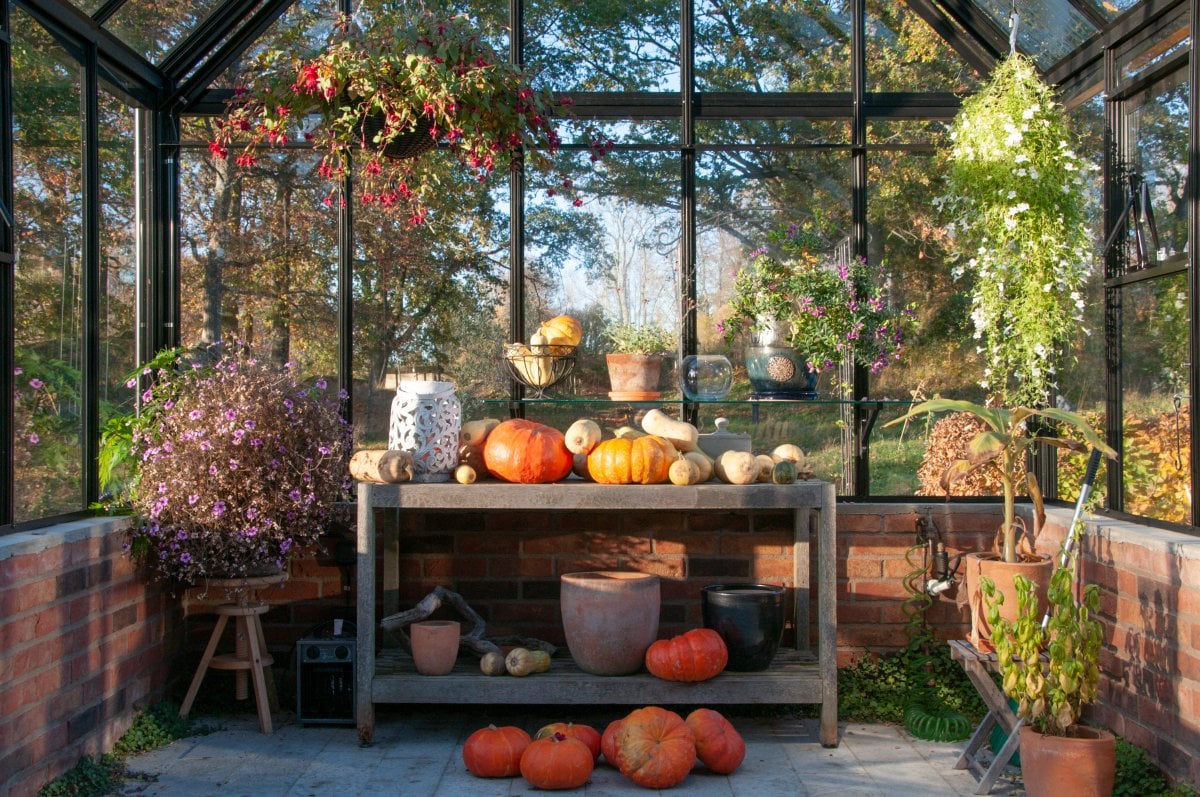How Much Food Can Your Small Greenhouse Grow?

 We get asked regularly "how much food can I grow in one of your smaller greenhouses?"
We get asked regularly "how much food can I grow in one of your smaller greenhouses?"
The first thing to know is that if you are new to gardening, having a greenhouse is like having a lab in your backyard. You are going to experiment, add or take away minerals, have failed projects and be surprised at the resiliency of nature. Now, we do not want to appear as alarmists in any way but thought you might be interested in knowing how to grow in a greenhouse too so here it goes!
What can you grow in an 8' x 8' greenhouse?
As you can guess, there are a few factors that will affect your yield including whether you heat the greenhouse or additional grow lights. Also, consider utilizing all areas of the greenhouse. Think about growing in pots under the bench, on the bench level, on the shelves, in hanging baskets and more! Maximizing the space will increase your yield.
Compare and contrast quick crops mixed with longer crops like tomatoes in a barely heated greenhouse: Micro-greens take a week or two, Topsi radishes grow in 30 days and heads of butter lettuce are edible in 60 days in a greenhouse. If you let them, tomatoes will take over the whole greenhouse and you will get 50 pounds easily as well as 60 pounds of cucumber and bushels of peppers. Can, jar and freeze them for the cold months! Once the tomatoes are pulled in the fall, move in the spinach starts and you'll have greens for salads even if the greenhouse is unheated after October.
Shoulder season gardening
Shoulder season varies with climate but with a little seasonal heat, you could get several crops over the eight warmest months of greenhouse growing. Here are some examples:
- Microgreens - Dedicate 4 square feet to have pea microgreens every day for salads, omelets or stir-fries.
- Radishes - Devote 4 square feet for radishes and you'll have them all summer.
- Lettuce - For 2 heads of lettuce a week you would need another 8 square feet.

- Tomatoes and Cucumbers - These grow up the sidewalls and take a good amount of space. About 22 square feet would be needed over the summertime.
- With the extra space plant an assortment of green onions, strawberries, basil and herbs and potatoes in pots or grow bags to fill the extra 26 square feet.
Decisions, decisions
Deciding how to make the best use of your greenhouse is a combination of what crops are growing and whether you heat your greenhouse. Spinach, for instance, is planted after tomatoes are removed in the fall and without any extra heat, it sprouts by March and is edible before the tomatoes go back into the unheated or partially heated greenhouse in May. Kale, root vegetables, herbs and other lettuces can flourish in a cold climate as long as there is solar gain in the greenhouse.

So obviously, the first decision is whether you will heat your greenhouse to extend the seasons. If you heat it seasonally you can grow so much more. But the big decision is what do you want to grow?
 If you are satisfied with fast-growing green onions instead of Walla Walla onions or spinach instead of slower growing Winter broccoli, there are so many possibilities in an 8 x8 foot greenhouse. The best advice is to grow what you love and grow the crops that take the least time to mature. Seed packets are helpful for timing. The variety Topsi radish (30 days) takes half the time than special varieties like Wasabi Radish (60 days). Growing shelling peas takes more room and three months to harvest compared to the similar tasting microgreens (8-10 days).
If you are satisfied with fast-growing green onions instead of Walla Walla onions or spinach instead of slower growing Winter broccoli, there are so many possibilities in an 8 x8 foot greenhouse. The best advice is to grow what you love and grow the crops that take the least time to mature. Seed packets are helpful for timing. The variety Topsi radish (30 days) takes half the time than special varieties like Wasabi Radish (60 days). Growing shelling peas takes more room and three months to harvest compared to the similar tasting microgreens (8-10 days).
There are lots of choices for faster-growing veggies and remember to rotate your crops too when the season changes.
More from Donna
For more great tips from Donna, visit www.donnabalzer.com.
You can also read Donna’s gardening books: No Guff Vegetable Gardening with Steven Biggs and her just released Gardener’s Gratitude Journal: Part Diary, Part Personal Growing Guide.
Want more greenhouse gardening tips? Get our Free Catalog now!


